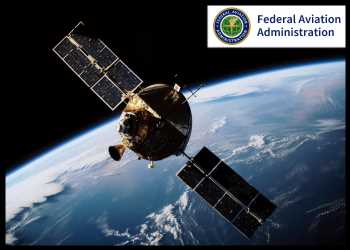FAA Proposes Rule To Reduce Growth Of Debris From Commercial Satellites
The Federal Aviation Administration has proposed a rule to limit the growth of new orbital debris and reduce the potential for collisions with spacecraft and satellites to promote a sustainable space environment.
If left unchecked, the accumulation of orbital debris will increase the risk of collisions and clutter orbits used for human spaceflight and for satellites providing communications, weather and global positioning system services.
The proposed rule would require commercial space operators to choose from among five options to dispose of the upper stages of launch vehicles.
These include conducting a controlled reentry; moving the upper stage to a less congested storage or graveyard orbit; sending the upper stage on an Earth-escape orbit; retrieving the upper stage (called active debris removal) within five years; or performing an uncontrolled atmospheric disposal.
By strictly limiting the uncontrolled reentry of upper stages, the FAA seeks to mitigate the risk to people on the ground and in flight due to its significant size and mass and the uncertainty of where it will land.
The proposed rule also would align commercial space orbital debris mitigation practices with those accepted by the U.S. government for its space missions.
More than 23,000 orbital objects sized 10 cm or bigger are estimated to be drifting in space.
Recent debris projections estimate a total of half a million objects sized between 1 and 10 cm on orbit and more than 100 million objects larger than 1 mm.
Source: Read Full Article

